Forschung & Projekte
Tree-Tree Interactions in subtropical forests (TreeDi)
Funding: International Research Training Group funded by the Deutsche Forschungsgemeinschaft (DFG, German Research Foundation) and University of Chinese Academy of Sciences (UCAS)
Partners: German Centre for Integrative Biodiversity Research (iDiv) Halle-Jena-Leipzig, Martin Luther University Halle-Wittenberg, Friedrich Schiller University Jena, Leipzig University, Dresden University of Technology, University of Göttingen, University of Chinese Academy of Sciences
Duration: 2018 - 2027
PIs in the institute: Sylvia Haider, Andreas Fichtner
Institute staff working on the project: Akhil Murali, Joice Klipel, Pablo Castro Sánchez-Bermejo
Website: https://www.idiv.de/en/treedi.html
"TreeDì - 林地 - TreeDiversity Interactions: The role of tree-tree interactions in local neighbourhoods in Chinese subtropical forests" is an International Research Training Group involving both German and Chinese institutions. TreeDì’s objective is to understand how tree-tree interactions in local neighbourhoods of varying diversity translate into the observed positive tree species richness effects on key ecosystem functions at the community scale. To do so, our work primarily focuses on BEF-China (https://bef-china.com/), a tree diversity experiment located in Xingangshan (BEF-China), in Jiangxi province, Southeast China. Specifically, the experiment is located in a subtropical region dominated by evergreen broad-leaved forests with a unique evolutionary history where certain tree lineages have radiated enormously. This area features evergreen broad-leaved forests with a distinct evolutionary history, characterized by significant radiation within certain tree lineages. With its rich diversity of woody species thriving naturally, these subtropical forests offer an unparalleled setting for delving deeper into the dynamics of woody species interactions. In the experiment, local tree species were planted in plots with different levels of diversity: seven levels of tree species richness (0, 1, 2, 4, 8, 16 and 24 tree species) combined with four levels of shrub species richness (0, 2, 4, 8 shrub species).
By bringing together experts and doctoral researchers from research institutions located in Germany and China, TreeDì creates a stimulating network of scientists. At Leuphana, researchers are engaged in various subprojects within the graduate school. Specifically, Andreas Fichtner is involved in the subproject “Spatial aboveground complementarity”, which aims to understand how tree-tree interactions drive spatial complementarity in tree crowns. Further, Pablo Castro Sánchez-Bermejo and Sylvia Haider are involved in the subproject “Complementarity through trait variation” which studies the intraspecific variation in leaf functional traits as response to tree diversity.
In 2023, all subprojects of TreeDì focused on the study of interactions between trees and shrubs and their effects on ecosystem functioning. To achieve this, we carried out a coordinated fieldwork campaign in August and September 2023. We sampled shrubs and the trees surrounding them in different plots varying in tree diversity and composition. Various measurements were conducted, including individual tree and shrub size, leaf trait assessments, evaluation of leaf herbivory and fungal infestation, soil microbial community activity analysis through soil core sampling, and terrestrial laser scanning to investigate spatial complementarity. In the specific case of the subproject “Complementarity through trait variation”, more than 6,000 leaves from trees and shrubs were collected for the assessment of morphological and chemical properties of leaves. This dataset is allowing us to understand how trees and shrubs adapt their leaf strategy to their biotic context. In the subproject “Spatial aboveground complementarity”, terrestrial and personal laser scanning techniques were used to accurately quantify the three-dimensional structure of trees, shrubs and communities. This allows us to explore how diversity-mediated structural changes translate into canopy complementarity.
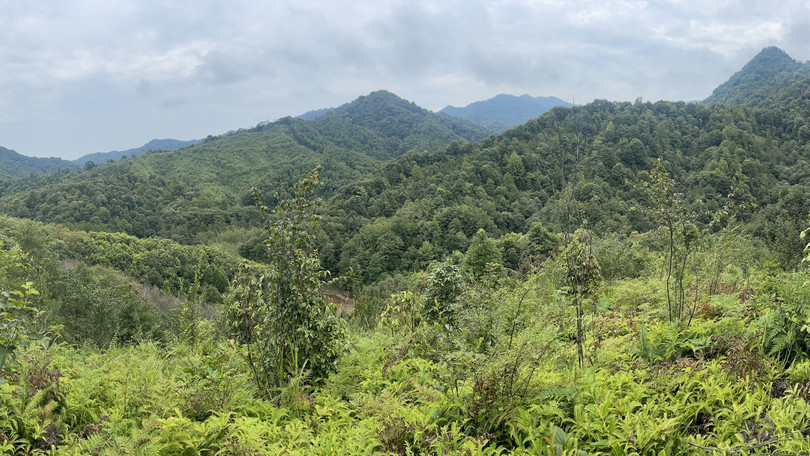 ©Sylvia Haider
©Sylvia Haider
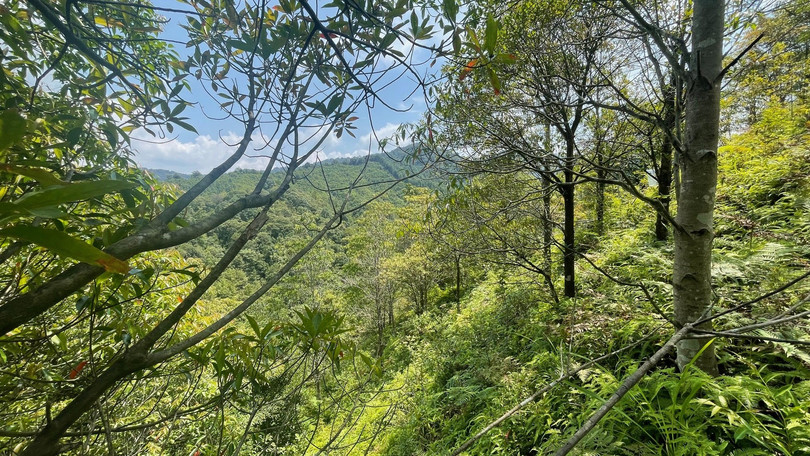 ©Sylvia Haider
©Sylvia Haider
 ©TreeDi
©TreeDi
Climate Future Lab "DIVERSA"
Funding: The Lower Saxony Centre for Climate Research (ZKfN)and its Climate Future Labs are funded by the zukunft.niedersachsen program of the Lower Saxony Ministry of Science and Culture and the Volkswagen Foundation.
Partners: Niedersächsische Landesforsten; Niedersächsischer Landesbetrieb für Wasserwirtschaft, Küsten- und Naturschutz
Duration: 2024 – 2030
PIs in the institute: Sylvia Haider, Andreas Fichtner
Institute staff working on the project: Carolin Luisa Lidola, Luzie Emilia Glock
Website:https://zkfn.de/en/diversa/
DIVERSA (‘Forest disturbances under climate change in Lower Saxony: Understanding drivers and impacts to enhance forest adaptability’) aims to understand and increase the natural resilience of forests to climate change-related disturbances. During past droughts, the vulnerability of Lower Saxony's forests to the increasing effects of climate change became evident. So far, the understanding of the natural potential of forests to adapt to climate change-induced disturbances is limited. An in-depth study of the causes and effects of disturbances is important in order to develop effective strategies to improve the adaptive capacity of forests in a timely manner.
In our subproject “Functional drought resistance of trees”, our goal is to improve our understanding on how different deciduous tree species respond to heat and drought to enable sustainable forest management in the face of climate change. Understanding how trees respond to increasing severity and frequency of extreme weather events such as drought is central for predicting future changes in forest structure and functions. Here, hydraulic traits are assumed to play a key role in a tree’s adaptability to a changing climate. Change impacts may further be modulated by forest management and elevated levels of airborne nitrogen deposition. However, we still have a limited understanding of how the interplay of forest management and nitrogen deposition affects the climate sensitivity of trees. Our aim is to better understand heat- and drought-induced responses of multiple deciduous tree species to support forest management under climate change. For this, we measure hydraulic, morphological and structural tree traits in-situ using various methods such as leaf spectroscopy, embolism vulnerability curves and mobile laser scanning. The impact of heat and drought on tree growth is assessed using tree-ring analysis. An additional greenhouse experiment will investigate trait expressions of tree seedlings and saplings in a controlled drought- and nitrogen-enhanced environment.
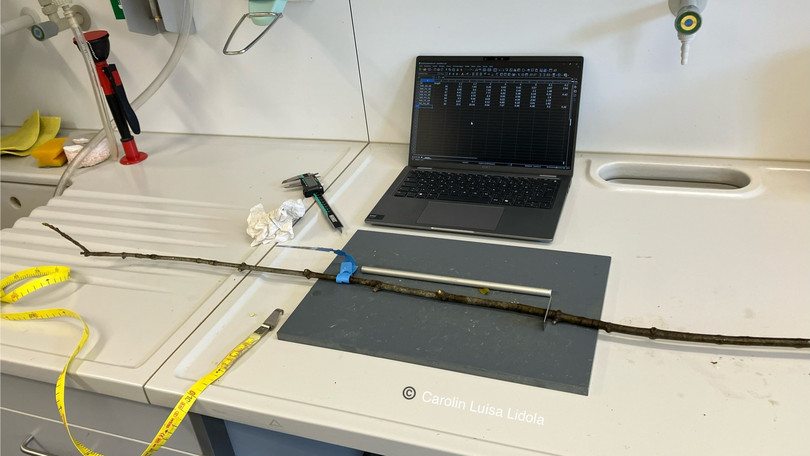 ©Carolin Lidola
©Carolin Lidola
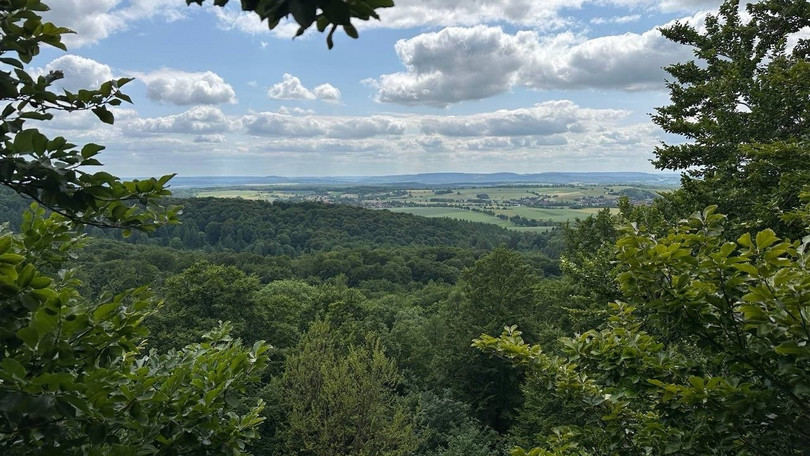 ©James Kilpatrick
©James Kilpatrick
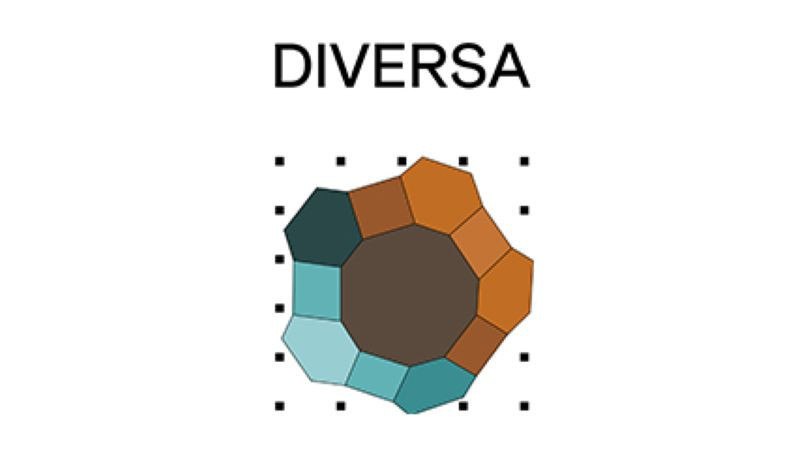 ©ZKfN (Zentrum Klimaforschung Niedersachsen)
©ZKfN (Zentrum Klimaforschung Niedersachsen)
BETA-FOR – ENHANCING STRUCTURAL DIVERSITY IN PRODUCTION FORESTS
Funding: Research Unit funded by the Deutsche Forschungsgemeinschaft (DFG, German Research Foundation)
Partners: Julius-Maximilians-University Wuerzburg, Georg-August-University Goettingen, German Center for Integrative Biodiversity Research (iDiv) Halle-Jena-Leipzig, Albert-Ludwigs-University Freiburg, TU Dresden, Utrecht University, University Leipzig, Black Forest National Park, University of Bayreuth, Goethe University Frankfurt am Main
Duration: 2022 – 2026
PIs in the institute: Andreas Fichtner
Institute staff working on the project: Pia Bradler
Website: https://www.uni-wuerzburg.de/en/beta-for/
The BETA-FOR project aims to explore the impacts of forest homogenization on biodiversity and ecosystem functions. The decline in β-diversity due to increasing human activities has led to large-scale forest homogenization. Through experimental approaches, we aim to develop guidelines for sustainable forest management to reverse negative impacts of homogenization.
Within the research unit, we investigate the effects of an enhancement of structural complexity in forests on biodiversity and multifunctionality by comparing a treatment district with a control district. This paired forest landscape design is replicated at eleven sites in Germany. In each treatment district, resource availability has been altered by different combinations of light (open or closed canopy) and dead wood availability (e.g. standing dead wood, logs, stumps). Each of the nine patches in a treatment district has received a different treatment, thus increasing structural beta-complexity, which we expect to influence biodiversity and multifunctionality. Our aim is to establish a connection between β-diversity and multifunctionality and to develop recommendations for long-term forest conservation strategies.
The main objective of our subproject within the research unit is to investigate how a higher spatial heterogeneity in forest structure affects the diversity of vascular plants, terricolous bryophytes, and lichens in the forest understory across spatial scales, and how this modulates above- and belowground functioning in terms of biomass production.
In collaboration with a great team including student assistants, bachelor and master students, technical staff, our colleagues at TU Dresden and across the research unit, we successfully conducted field work in all eleven study regions. 2023 year was the first year in which vegetation surveys were conducted in all 234 patches across the eleven forest landscapes, allowing analyses of structural enhancement in treatment districts compared to control districts across all study regions. Moreover, we sampled aboveground biomass during summer and fine root samples as a measure of belowground biomass production in all patches during autumn. This allows us to link patterns in species richness to patterns in biomass production and to see how this is influenced by the structural enhancement. Additionally, we took hemispheric pictures which enables us to quantify light availability as a key resource for plants in the forest understory.
We are currently working on quantifying how the enhancement of structural beta-complexity influences the taxonomic, phylogenetic and functional diversity of vascular plants across spatial scales (alpha, beta and gamma).
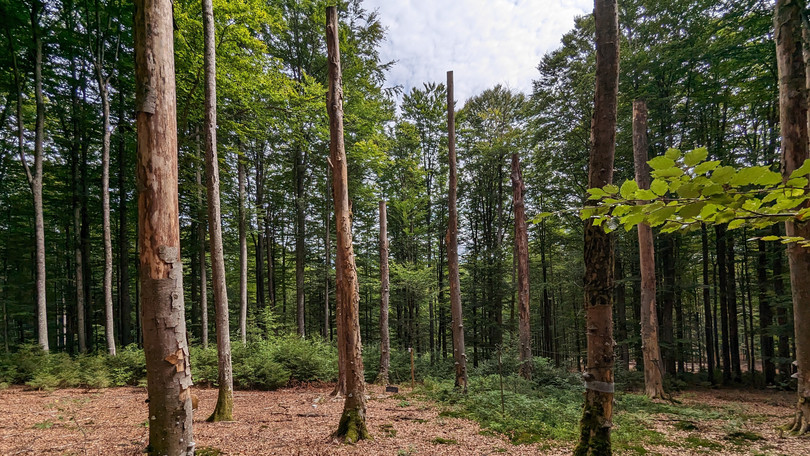 ©Pia Bradler
©Pia Bradler
 ©Beta-For
©Beta-For
Mountain Invasion Research Network (MIREN) / RangeX
Funding: 2019-2020 BiodivERsA joint call for research proposals, under the BiodivClim ERA-Net COFUND programme, and with the funding organisations Innovation Fund Denmark, Department of Science and Innovation Republic of South Africa, the Research Council of Norway, the Swiss National Science Foundation, the Swedish Research Council for Environment, Agricultural Sciences and Spatial Planning, and the German Research Foundation.
Partners:
MIREN: Conicet Ianigla (AR), Montana State University (USA), University of Antwerp (BE), Universidad de Concepción (CL), ETH Zurich (CH), La Trobe University (AUS), University of Kashmir (IN) + additional regional partners
RangeX: ETH Zurich (CH), University of the Free State (ZA), Aarhus University (DK), University of Bergen (NO), Swedish University of Agricultural Sciences (SE), University of Gothenburg (SE), CNRS / Université de Picardie Jules Verne (FR), Universidad de Concepción (Cl), University of Pretoria (ZA)
Duration:
MIREN: 2005 – ongoing
RangeX: 2021 – 2025
PIs in the institute: Sylvia Haider
Institute staff working on the project: Meike Buhaly, Sophia Turner
Website: MIREN: https://www.mountaininvasions.org/ RangeX: https://rangex.w.uib.no/
The RangeX project is a Biodiversa project that seeks to better understand the processes and impacts of plants that are expanding their ranges following climate warming, and to use this knowledge to inform the development of policy regarding range-expanding plant species. We focus on mountain ecosystems as an ideal model system to address our research questions.
For our work in RangeX, we primarily use data collected by the Mountain Invasion Research Network (MIREN), a consortium of researchers all aiming to understand the effects of global change on species’ distributions and biodiversity in mountainous areas. MIREN was founded in 2005 with a focus on global monitoring of non-native plant invasions in mountains but has since expanded to the study of species redistribution under different drivers of global change including biological invasions, climate change, and land-use change. MIREN consists of standardized vegetation surveys along elevation gradients to evaluate and quantify the process and mechanisms that are shaping mountain plant communities at regional to global scales.
In 2022, our field work on the island of Tenerife was completed for both internal analysis as well as an addition to the MIREN global dataset. Now, we are answering questions such as: how do non-native species alter community composition over time on Tenerife? Are non-native species homogenizing communities at the regional to global scale? Can we predict range shifts of plant species in mountains using functional, range, and distribution traits?
 ©Sylvia Haider
©Sylvia Haider
 ©Miren
©Miren
 ©RangeX
©RangeX
THE NUTRIENT NETWORK
Partners: German Center for Integrative Biodiversity Research (iDiv) Halle-Jena-Leipzig
Duration: since 2015
PIs in the institute: Sylvia Haider
Website:nutnet.org
Hintergrund
Weltweit werden Ökosysteme von Menschen verändert, was in vielen Fällen zu einem erheblichen Rückgang der Biodiversität führt. Eine besondere Rolle spielt dabei die Nährstoffanreicherung durch Düngung und die Verbrennung fossiler Brennstoffe. So hat sich der globale Stickstoff- und Phosphorgehalt in Luft, Wasser und Boden seit der Industrialisierung verdoppelt bzw. verfünffacht. Gleichzeitig greift der Mensch massiv in Ökosysteme ein, indem er Lebensräume vernichtet und im Zuge von Jagd und Fischerei Bestände dezimiert. Auf der anderen Seite werden durch Viehhaltung oder im Rahmen von Naturschutz- oder Freizeitaktivitäten neue Arten eingeführt, so dass sich die Zusammensetzung grundlegend verschiebt.
Auch wenn die globale Bedeutung dieser menschlichen Aktivitäten schon lange bekannt ist, existierte bisher kein international koordinierter Forschungsansatz, um die Folgen im Detail zu untersuchen. Das internationale Forschungsnetzwerk „Nutrient Network“ (NutNet) hat es sich zum Ziel gemacht, die folgenden Fragen für Wiesen- und Weideökosysteme auf über 130 Standorten weltweit zu beantworten:
- Wie gut ist unser derzeitiges Verständnis über die Zusammenhänge von Ökosystem-Produktivität und Diversität?
- Inwieweit sind Produktivität und Diversität in naturnahen Weide- und Wiesen-Ökosystemen weltweit durch verschiedene Nährstoffe limitiert?
- Unter welchen Bedingungen können Pflanzenfresser oder Düngung die Biomasse, Diversität oder Zusammensetzung von Pflanzengemeinschaften maßgeblich beeinflussen?
Das Nutrient Network arbeitet mit einem einheitlichen Versuchsaufbau und stellt standardisierte Protokolle zur Verfügung, die auf allen Flächen weltweit zum Einsatz kommen.
Die Versuchsfläche in Bad Lauchstädt
Seit 2015 existiert auch auf der Versuchsstation Bad Lauchstädt eine Fläche des Nutrient Network und seit 2016 werden regelmäßig die Behandlungen mit Stickstoff-, Phosphat- und Kaliumsulfatdünger in unterschiedlichen Kombinationen durchgeführt. Jährlich werden Vegetationsaufnahmen gemacht, die Biomasse geerntet, Bodenproben genommen und die Lichtintensität gemessen. Diese Daten sind bereits in die zentrale Datenbank eingeflossen. Darüber hinaus nehmen wir an mehreren Zusatzprojekten teil, in denen unter anderem Stickstofffixierung, Fraßschäden durch Insekten und die Skalenabhängigkeit von pflanzlicher Artenvielfalt untersucht werden. Besonderer Fokus liegt in Bad Lauchstädt auf den potentiellen Veränderungen von Gemeinschaften und Prozessen im Boden.
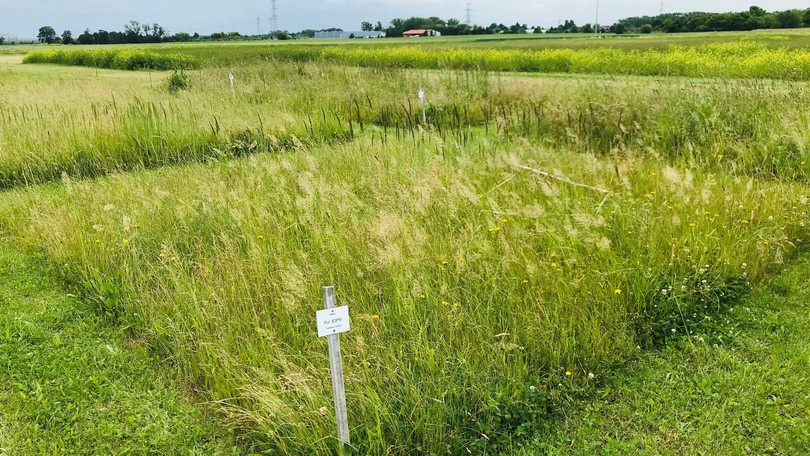 ©Sylvia Haider
©Sylvia Haider
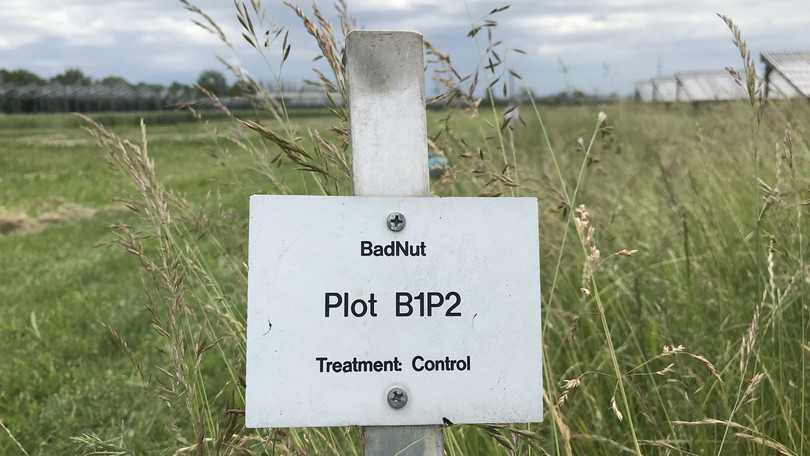 ©Sylvia Haider
©Sylvia Haider
 ©NutNet
©NutNet
